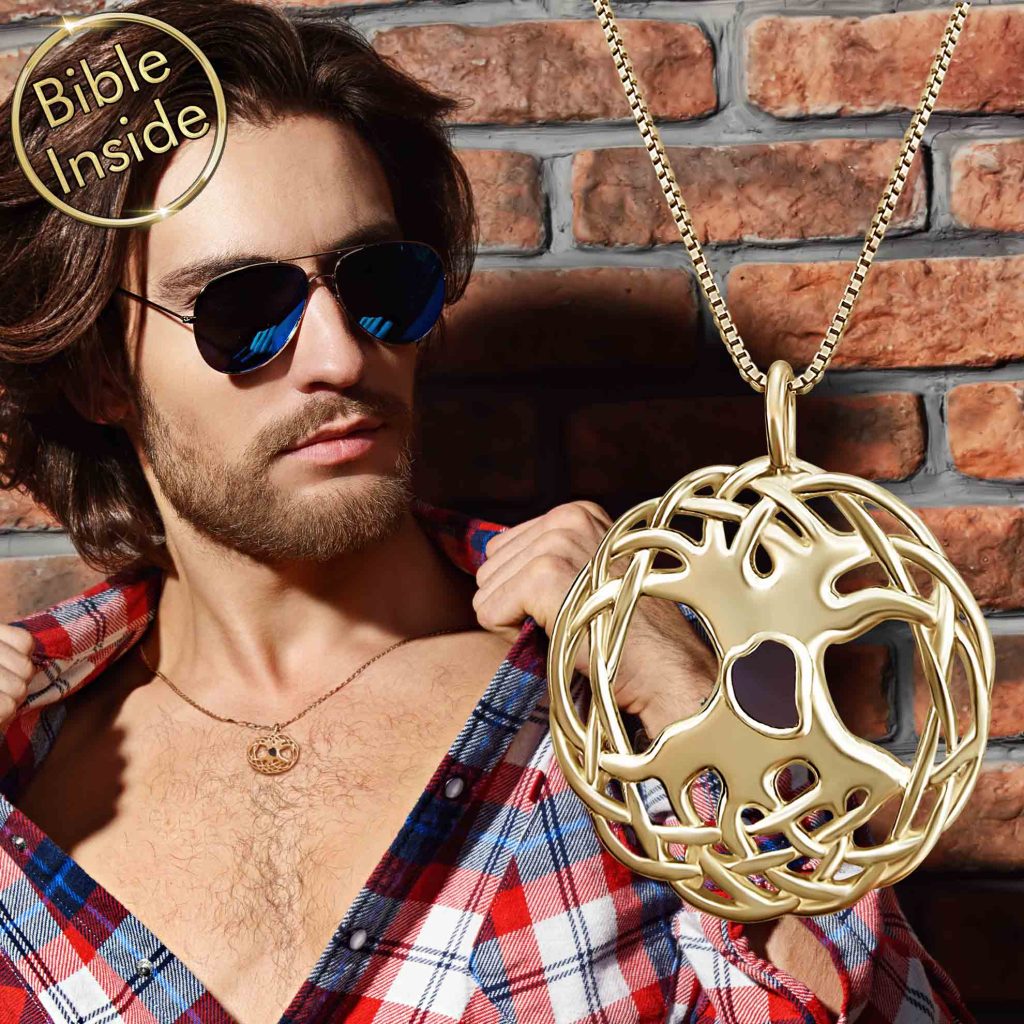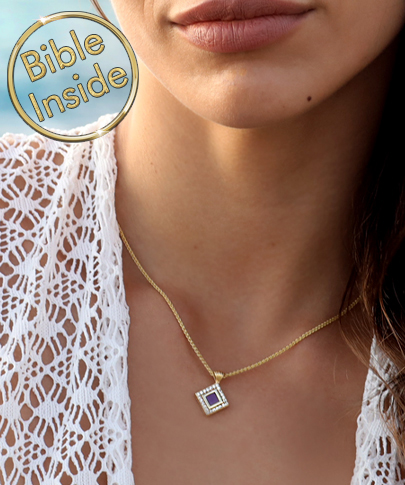The Uncomfortable Truth About Modern Faith Expression Trends
Handmade Christian jewelry has become the latest battlefield in contemporary Christianity discussions. The uncomfortable truth is that this growing trend might be fundamentally changing how believers express their faith. Christianity accessories continue to flood the market with mass-produced symbols and generic designs. Yet something profound is happening in workshops across the globe. Artisans are crafting pieces that challenge everything we thought we knew about spiritual expression through adornment.
The fashion industry has witnessed an unprecedented shift toward personalized faith expressions. Many traditional religious communities resist this evolution. Christianity has always embraced symbolic representation through art, architecture, and personal adornments. Today’s handmade Christian jewelry movement represents something entirely different. These aren’t your grandmother’s simple cross pendants. They’re not traditional religious medals passed down through generations.
Contemporary designers are creating innovative pieces for believers. They incorporate complex theological concepts, personal testimonies, and innovative materials. These would have been unimaginable decades ago. The companies leading this revolution understand modern believers. They crave authenticity over mass production. They’re responding to a generation that values craftsmanship and personal meaning. This generation prefers individual spiritual journeys over conformity to established religious aesthetics.
Consider the explosion of faith-based brands. They now offer everything from sterling silver pieces embedded with microscopic Biblical verses to gold accessories featuring contemporary interpretations of ancient symbols. These stores aren’t just selling accessories. They’re facilitating personal spiritual experiences through wearable art. The fine handmade segment has particularly embraced this trend. Pieces cost thousands of dollars and take months to complete. This controversy reveals deeper questions about faith expression in modern society.
The Traditional Christian Jewelry Resistance Movement
Religious Institution Pushback Against Handmade Pieces
The controversy emerges when traditional faith communities encounter these innovative expressions. Some Christian jewelers report resistance from established religious institutions. These institutions view elaborate faith jewelry as potentially prideful or distracting from genuine worship. Critics argue that inspirational handmade Christian jewelry, particularly high-end pieces, contradicts Biblical teachings. They question whether expensive gold Christianity accessories aligns with Christ’s teachings about serving others and living simply.
Yet supporters of the handmade movement present compelling counterarguments. They point to the rich tradition of religious art throughout Christianity’s history. This includes illuminated manuscripts and cathedral architecture. If these elaborate expressions of faith were acceptable, why shouldn’t contemporary believers express devotion through carefully crafted personal adornments? The unique Christianity jewelry movement represents a return to artisanal traditions. These traditions created the world’s most treasured religious artifacts.
Christianity Faith-Based Market Tension and Design Conflicts
The Christian jewelry market embodies tensions between traditional faith expression and contemporary spiritual needs. Conventional retailers maintain classic crosses and fish symbols, while innovative artisans create handmade pieces challenging established boundaries. These modern designs incorporate advanced materials and cutting-edge techniques, establishing new categories of faith-based expression that divide Christian communities.
Hebrew-inspired handmade Christianity jewelry blends Jewish traditions with Christian symbolism, sparking debates about cultural appropriation versus spiritual unity. Contemporary pieces featuring scientific imagery or modern art styles challenge conservative aesthetic preferences. Even simple accessories become controversial when designs deviate from traditional iconography, creating friction within faith communities.
Christian companies navigate these cultural tensions while serving diverse customer bases. Some focus exclusively on conventional designs, while others embrace experimental approaches attracting younger believers seeking authentic personal expression. The stainless steel segment has gained popularity among Christians preferring contemporary aesthetics over traditional gold options.
Economic realities expose uncomfortable truths about modern faith commerce. Top Christianity accessories brands generate millions annually, yet significant markups raise exploitation concerns. Independent artisans struggle against mass-produced overseas alternatives, forcing choices between artistic integrity and financial survival. Authentic sterling silver pieces command premium prices due to labor-intensive creation, while factory alternatives flood discount retailers.
This economic divide creates accessibility issues where expensive handmade pieces become symbols of privilege rather than devotion. Critics argue that luxury faith accessories contradict Biblical teachings about equality, transforming spiritual symbols into status markers that divide rather than unite believers, challenging core Christianity values about serving all people regardless of economic status.
The Christian Jewelry Authenticity Versus Accessibility Debate
Jewish Christian accessories represents another complex economic consideration, as authentic pieces often require specialized knowledge and techniques passed down through generations. These traditional methods increase production costs significantly, making genuine items inaccessible to many interested buyers. The alternative involves simplified mass-production that reduces cultural authenticity while increasing affordability.
Women’s jewelry segments within Christianity markets demonstrate particularly stark economic disparities. Fine handmade Christian jewelry designed for women often costs significantly more than equivalent men’s pieces, reflecting broader gender-based pricing patterns throughout the fashion industry. This economic reality affects how different demographics access meaningful faith expression through personal adornment.
Designer jewelry within Christianity markets commands exceptional prices, with some pieces costing more than average monthly salaries. While supporters argue these represent legitimate artistic achievements deserving premium compensation, critics question whether such pricing aligns with Christianity values about material possessions and serving others before oneself.

The Christian Jewelry Cultural Appropriation Minefield
When Sacred Christian Symbols Cross Cultural Boundaries
The most explosive controversy surrounding handmade Christian jewelry involves cultural appropriation accusations. This occurs when designs incorporate elements from other faith traditions or ethnic communities. Hebrew accessories Christianity designs particularly spark heated debates. These raise questions about whether combining Jewish and Christianity symbols represents spiritual unity or inappropriate cultural borrowing.
Dr. Rebecca Martinez, a religious studies professor at Northwestern Seminary, argues that contemporary jewelry Christians wear often misappropriates sacred symbols. Many wearers don’t understand their historical significance. She points to popular designs that combine Celtic knots with Christianity crosses. She argues that such combinations dilute both traditions while creating commercially appealing but culturally insensitive products. Her research suggests many Christianity accessories companies lack adequate cultural consultation when developing new handmade Christian jewelry designs.
The positive Christianity accessories movement faces similar criticism. This happens when incorporating symbols from Eastern religions, Native American traditions, or African spiritual practices. While creators often claim these combinations celebrate universal spiritual truths, critics argue they demonstrate Western religious imperialism. This extracts meaningful symbols from their cultural contexts for commercial purposes in handmade Christian jewelry.
The Handmade Christian Technology Integration Challenge
Contemporary Christian accessories designers defend their creative freedom by citing Christianity’s historical embrace of diverse cultural influences. They point to early Christianity art that incorporated Greek, Roman, and Jewish artistic elements. They argue that modern synthesis continues this traditional openness to cross-cultural inspiration. However, opponents distinguish between organic cultural evolution and commercial exploitation of sacred symbols in handmade Christian jewelry.
Modern Christianity jewelry increasingly incorporates advanced technology that challenges traditional aesthetic sensibilities. Some handmade Christian pieces now feature nano Bible chips containing complete scriptural texts. Others integrate LED lighting or electronic components that enhance visual appeal. These technological innovations divide Christianity communities between those embracing modern tools for faith expression and those preferring traditional simplicity.
The integration of high-tech elements into faith-based jewelry raises theological questions. These concern the appropriateness of combining spiritual symbols with secular technology. Conservative Christians worry that such combinations prioritize novelty over genuine devotion. Progressive believers celebrate innovative approaches to sharing Biblical messages through contemporary mediums in handmade Christianity jewelry.
Crystal jewelry within Christian markets presents additional controversy. Some believers associate crystals with New Age spirituality rather than traditional Christianity faith. When handmade Christianity accessories pieces incorporate crystals for aesthetic purposes, they risk alienating conservative customers. They attract those comfortable with broader spiritual interpretations.
Waterproof jewelry designed for active lifestyles represents another technological advancement. This challenges traditional Christianity jewelry aesthetics. While practical benefits are obvious, some traditionalists argue that faith symbols shouldn’t be treated as sports accessories or casual fashion items. This debate reflects deeper tensions about appropriate contexts for displaying religious symbols through handmade Christian jewelry.
The Psychological Impact of Handmade Christian Faith-Based Adornment
How Christian Jewelry Shapes Spiritual Identity
The psychological effects of wearing handmade Christian jewelry extend far beyond simple aesthetic preferences. These pieces influence how believers perceive themselves and interact with their faith communities. Research conducted by Dr. Michael Thompson at Trinity College reveals interesting findings. Individuals wearing distinctive Christianity jewelry report increased confidence when discussing their faith with others. This suggests these handmade Christianity accessories pieces function as external validation of internal beliefs.
However, the same research indicates potential negative consequences. This occurs when jewelry becomes a substitute for genuine spiritual development. Some participants admitted relying on their handmade Christianity accessories to communicate faith rather than developing authentic relationships. They avoid engaging in meaningful spiritual practices. This dependency raises concerns about whether elaborate faith jewelry enables spiritual complacency. Does handmade Christian accessories encourage genuine growth?
The luxury jewelry brands targeting Christianity markets often emphasize exclusivity and premium materials. This creates psychological associations between expensive pieces and superior faith expression. This marketing approach contradicts Biblical teachings about humility and service. Yet it proves remarkably effective at driving sales among affluent Christian consumers. The psychological appeal of owning something rare and beautiful becomes intertwined with spiritual identity in potentially problematic ways through handmade Christianity jewelry.
The Christian Jewelry Community Response Dynamic
Stainless steel handmade Christianity jewelry appeals to distinct psychological motivations among modern believers. Its durability and contemporary aesthetics attract younger Christians seeking fresh approaches to faith expression. These handmade pieces typically cost significantly less than gold or silver alternatives, making them accessible to broader demographics while maintaining sophisticated appearances. The psychological comfort of wearing something both meaningful and practical resonates with believers who want to integrate their faith into active lifestyles through tangible reminders.
Gold plated accessories within Christianity markets represents a fascinating psychological compromise between luxury and affordability. Wearers enjoy the visual appeal of expensive materials while maintaining reasonable budgets, yet some experience underlying anxiety about authenticity in their faith expression through less costly alternatives. This internal tension reveals complex relationships between material possessions and spiritual confidence in personal adornment choices.
Online jewelry stores specializing in handmade Christianity designs have fundamentally transformed how believers discover and purchase faith-based handmade accessories. The psychological impact of browsing extensive collections privately allows style exploration without community judgment, though this shift reduces the social accountability that traditional in-person shopping experiences provide. This evolution toward private selection processes significantly affects how Christian communities share and discuss faith expression.
Personalized jewelry options enable Christians to incorporate specific Biblical verses, family names, or meaningful dates into their accessories, creating deeply personal spiritual reminders. The psychological attachment to these customized pieces often exceeds their material value, becoming powerful tools for encouragement during challenging times. However, emphasis on individual customization potentially undermines traditional community-focused approaches to Christianity practice, reflecting broader cultural shifts within contemporary faith communities.
Conclusion
The handmade Christian jewelry controversy exposes fundamental tensions within modern Christianity about authenticity, accessibility, and appropriate faith expression. While critics raise valid concerns about materialism and cultural sensitivity, supporters present compelling arguments about artistic freedom and personal spiritual growth. The debate ultimately reflects broader struggles within Christianity communities about adapting ancient faith traditions to contemporary cultural contexts through handmade Christianity accessories.
Perhaps the most important consideration isn’t whether handmade Christianity accessories helps or hinders spiritual development. Rather, it’s how individual believers approach these accessories within their personal faith journeys. The same handmade Christian jewelry piece might represent genuine devotion for one person while becoming a stumbling block for another. This depends on heart attitudes and spiritual maturity.
What role should handmade Christianity jewelry play in your own faith expression, and how can Christianity communities navigate these complex cultural tensions while maintaining unity and love?

